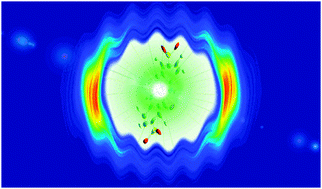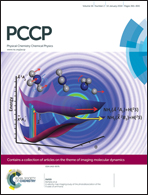Effects of resonant excitation, pulse duration and intensity on photoelectron imaging of a dianion†
Abstract
The photoelectron imaging of the indigo carmine dianion is used to demonstrate the effects of resonance excitation, pulse duration and pulse intensity on the photoelectron spectra and angular distributions of a dianion. Excitation of the S1 state leads to an aligned distribution of excited state dianions. The photoelectron angular distribution following subsequent photodetachment within a femtosecond laser pulse is primarily determined by the repulsive Coulomb barrier. Extending the timescale for photodetachment to nanoseconds leads to dramatic changes in both the spectral and angular distributions. These observations are explained in terms of statistical detachment of electrons, either from the monoanion, or from the ground state of the dianion following a number of photon cycles through the S1 ← S0 transition. At high intensity, new electron emission channels open up, leading to emission below the repulsive Coulomb barrier. This has been assigned to strong-field induced detachment and the effect of an electric field on the Coulomb barrier is discussed in terms of the photoelectron spectra and angular distributions.

- This article is part of the themed collection: Imaging molecular dynamics

 Please wait while we load your content...
Please wait while we load your content...